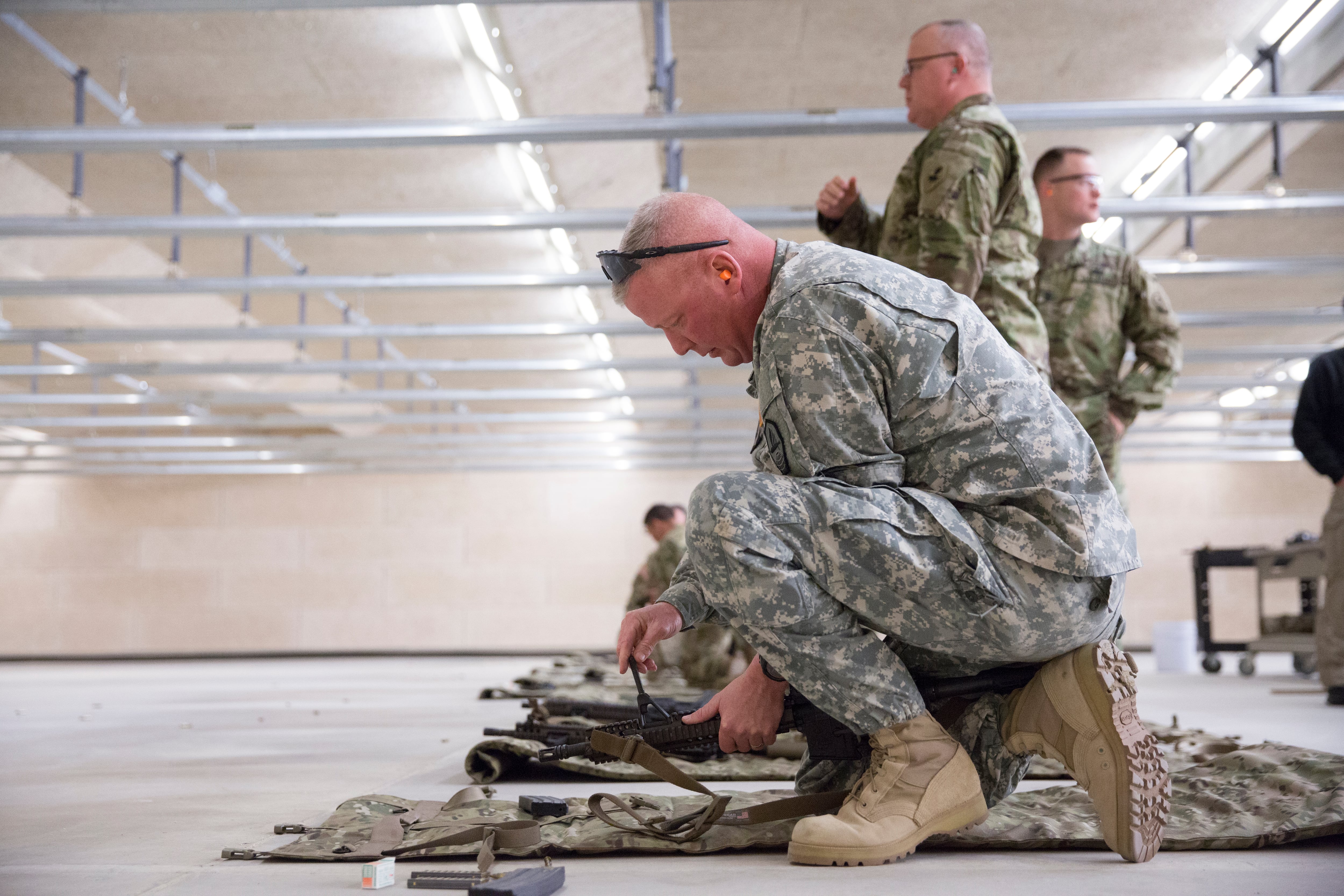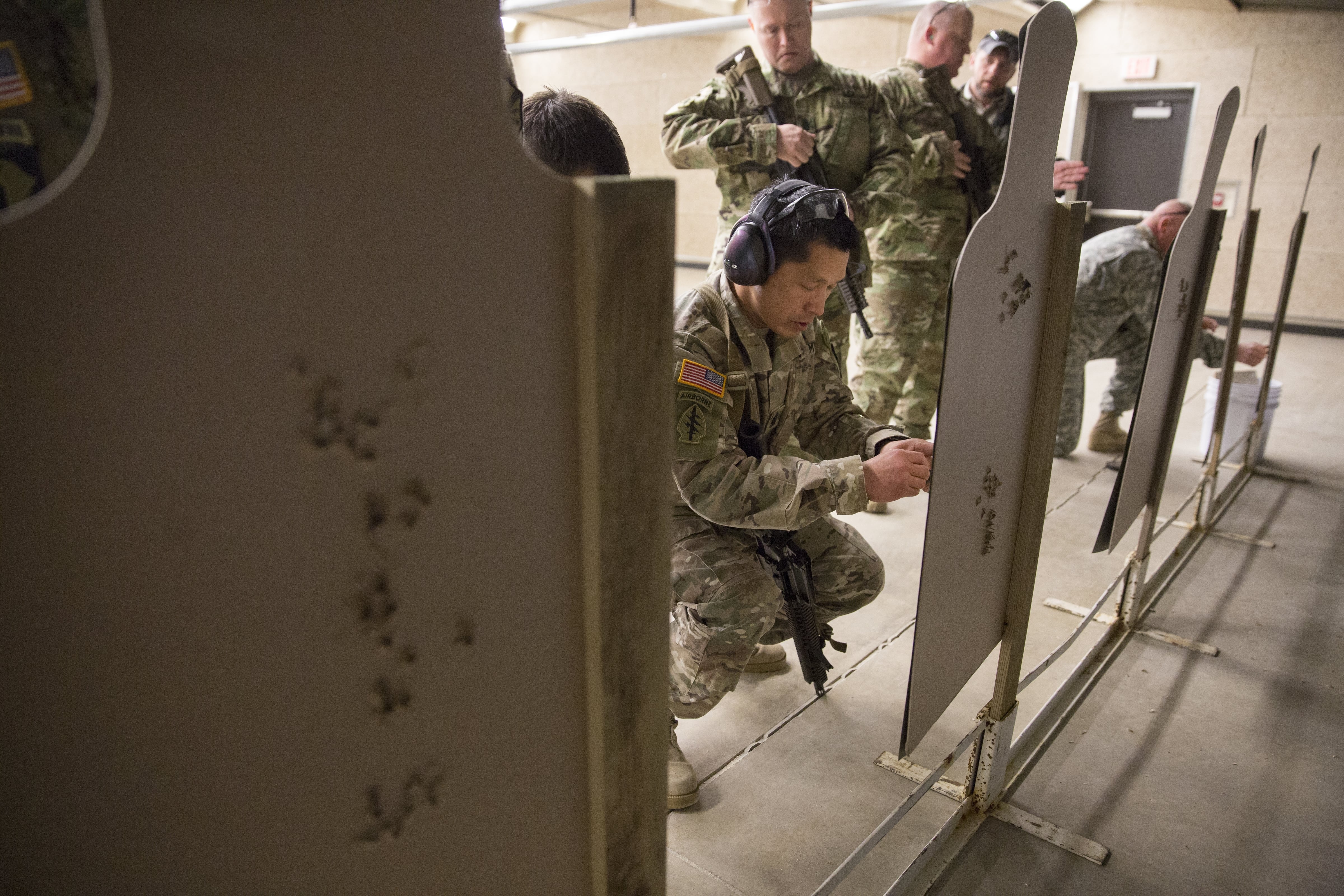FORT A.P. HILL, Va. — The Army needs "thinking soldiers" — not just troops who can blindly follow directions. Their commanders need to stop barking orders all the time and start listening to their subordinates. And it's time to cut out all those PowerPoint presentations.
These are some of the key takeaways from the service's new learning strategy, called Adaptive Soldier Leader Training and Education.
After years of Army research and development, ASLTE is finally rolling out across the Army schoolhouses that forge future leaders.
"How we've done it for years — you've had a set (program of instruction), you go one through ten, and that's how it's covered, and that's how you evaluate it. We put a matrix on it," said Turnbull, enlisted leader of the Combined Arms Center.
UnderASLTE, there is so set number of steps as long as the desired outcome is met.
If this sounds simple and obvious, perhaps that’s because at heart the concept is thousands of years old.
"This is not new. This is the under-the-oak-tree training. This is Socrates," said AWG commander Col. Michael Loos. "What we're trying to do, what we have done, is create an exportable package. Because at the end of the day, it has to be scaleable and usable by large formations."

Command Sgt. Maj. Travis Cherry adjusts his iron sights during a session at an indoor range during the workshop.
Photo Credit: Mike Morones/Staff
Marksmanship was a frequent example during the workshop. "If you're only shooting to qualify, to satisfy a rubric, then we aren't teaching what marksmanship should be, which is to get better at shooting to ultimately win," Henry said.
So what differences will soldiers see under ASLTE?
Lt. Col. Matthew Butler, with the AWG, said many new soldiers will notice "nothing." as the need for personalized, tailored, engaging instruction is intuitive to them; they expect it and "get it," he said. As an example of young soldiers' adaptability, he cited the Rhino arms soldiers rigged up to their Humvees during the wars in Iraq. These arms were affixed with a hot object to disrupt infrared improvised explosive device sensors.
"Give him a torch, some pig iron and let him free," Butler said., touting that flexibility toward the goal of survivability. "All we have to do is make sure the institution doesn’t get in the way of our new soldier."

Sergeants Major from around the Army met with members of the Asymmetric Warfare Group and discussed Adaptive Soldier Leader Training and Education (ASLTE) at Fort A.P. Hill in Bowling Green, Va., on Wednesday, February 10, 2016.
Photo Credit: Mike Morones, Military Times
The AWG was founded in 2006 to address the difficulty the Army was having with insurgencies in Afghanistan and Iraq, where battle lines were more fluid. That uncertainty called for certain leadership qualities, "adaptive" and "agile" in particular. Command Sgt. Maj. Brian Hester, from the Army's Security Assistance Training Management Organization, likened the on-the-fly teaching and leadership adjustments to "building an airplane in flight."
Butler said the founders of AWG, particularly those with special operations backgrounds, understood the "squishier human traits." Adaptability, leadership, initiative and problem-solving needed to be identified, defined and cultivated in Big Army. So AWG began crafting a methodology to try to capture development of such intangibles into a package, and ASLTE was born.
The recent workshop at Fort A.P. Hill marked a new effort to instill this mindset into every leader-training organization in the Army.
"What's really interesting about it is what we see here this week is focused on the institutional Army, which is a little more rigid than the operational Army, in my opinion," Hester said. "The unique thing about this is to get a pretty wide community of sergeants major together, and the discussion between sergeants major is what makes this really valuable. You start to get some horsepower behind the ASLTE methodology."
If the institutional Army adopts that education infrastructure, the hope would be that it becomes ingrained in every Army leader.
"If you ask leaders anywhere, describe your best soldiers, it's never the soldier who can put the (M)240B together the fastest. It's the ones that have initiative, the ones that practice good teamwork, the ones that are engaged and make good decisions," said Cornell-d'Echert. "That is the fundamental power. And now that's been embraced in the Army Learning Model."



